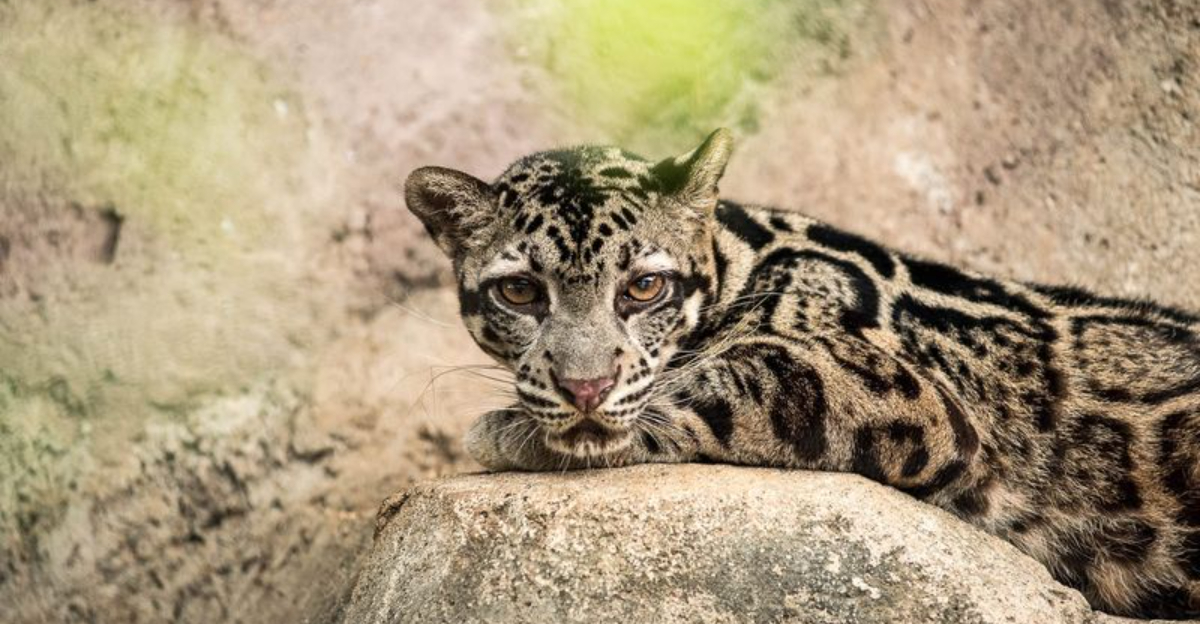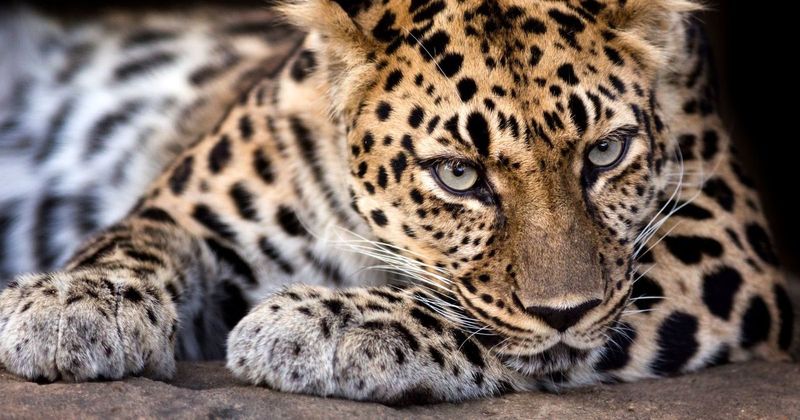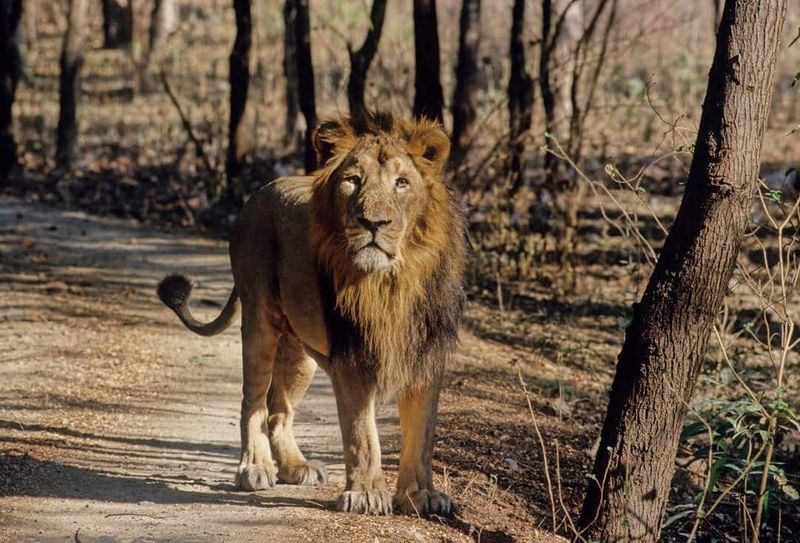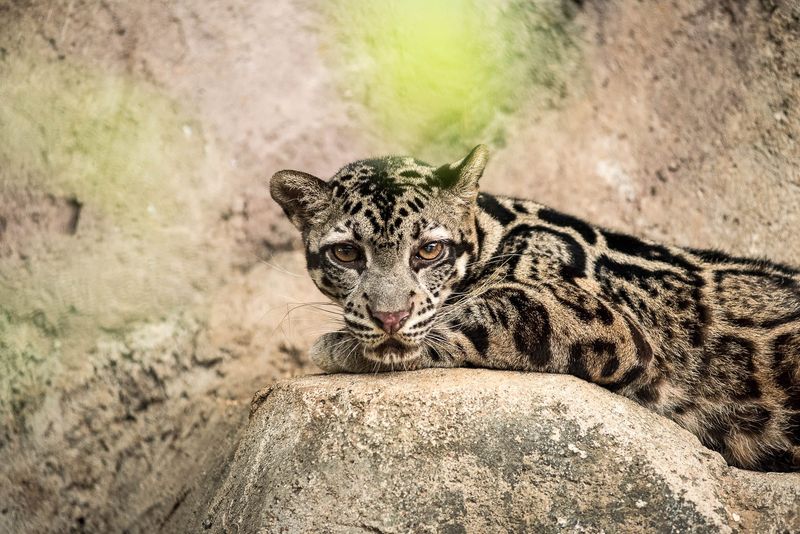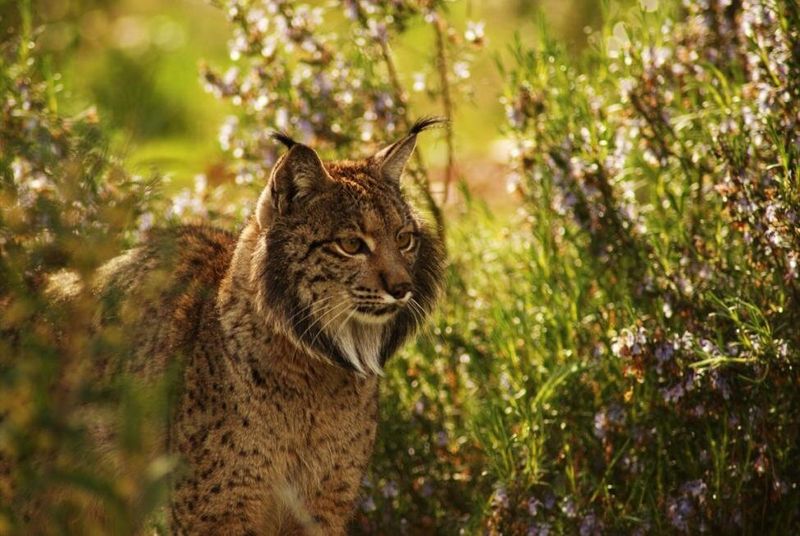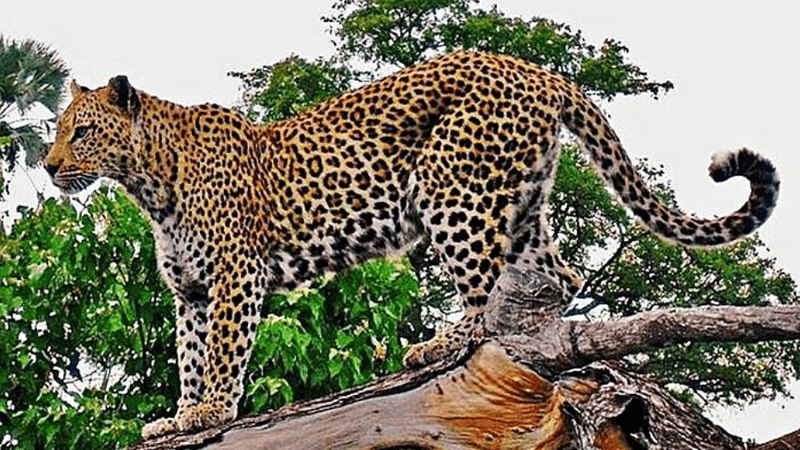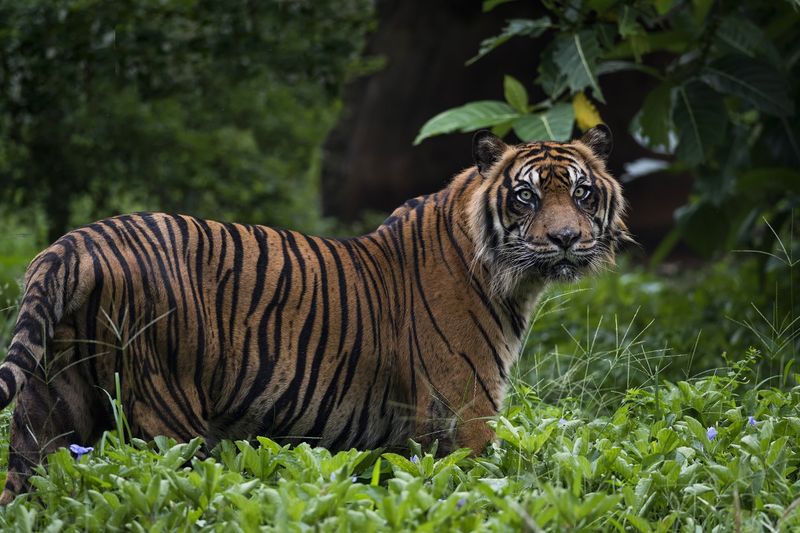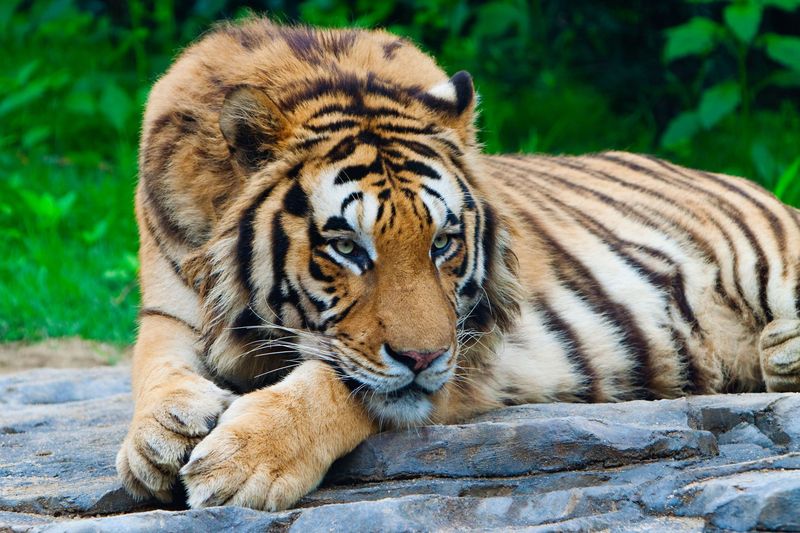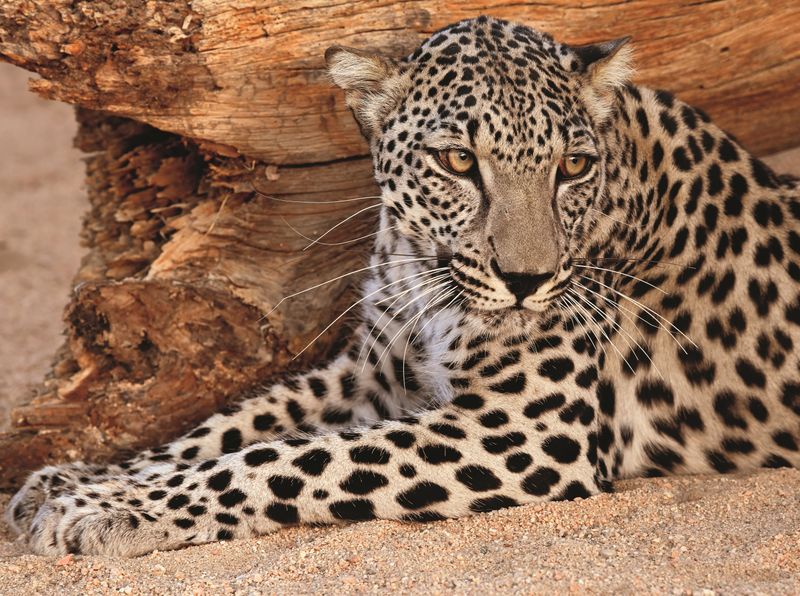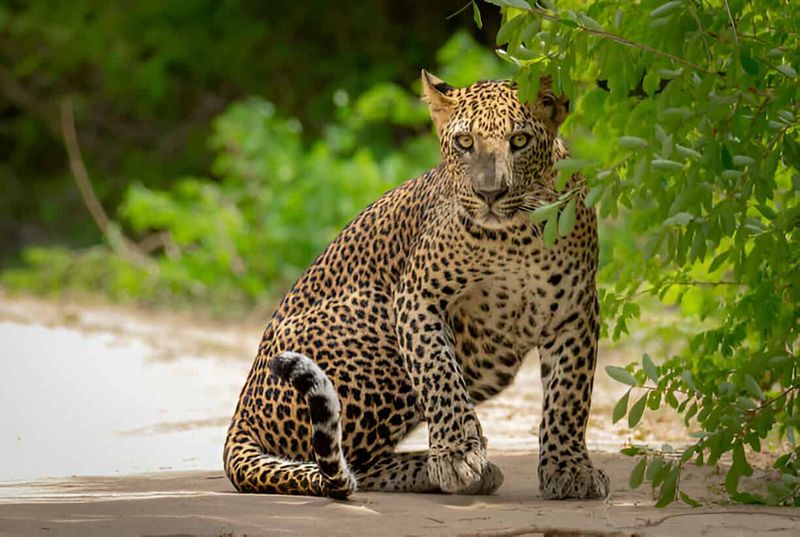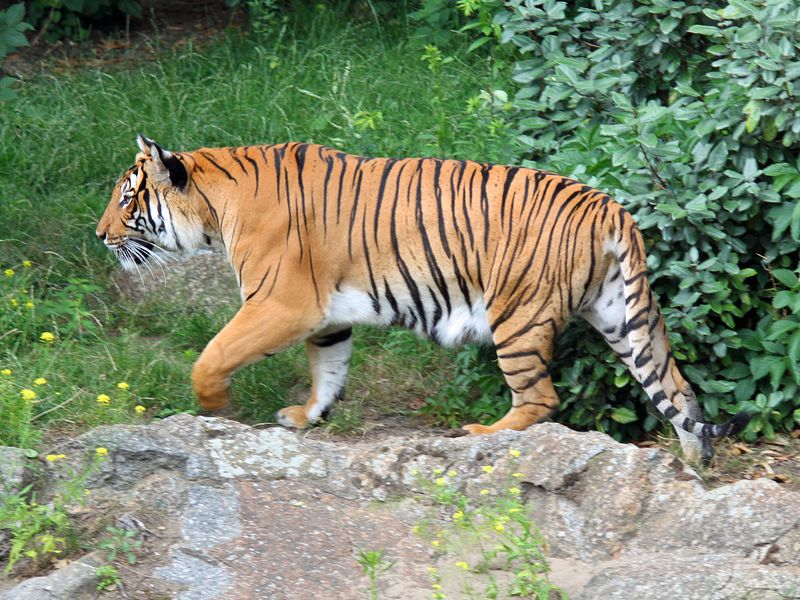📖 Table of Content:
The world of big cats extends far beyond the lions and tigers we commonly see in zoos and nature documentaries. Hidden across remote corners of our planet are fascinating subspecies with unique adaptations and striking appearances. These lesser-known felines face serious conservation challenges, with some teetering on the edge of extinction. Let’s explore some remarkable big cat subspecies that deserve more recognition.
1. Amur Leopard
Native to the Russian Far East and northern China, the Amur leopard has adapted to survive in freezing temperatures. Their thick fur grows up to 3 inches long in winter – much longer than other leopards living in warmer climates. With fewer than 100 individuals left in the wild, these cats are critically endangered.
Their beautiful spotted coats have made them targets for poachers, while habitat loss continues to shrink their territory. Unlike most leopards, Amur leopards can leap more than 19 feet horizontally and up to 10 feet vertically, helping them catch prey in the dense forests they call home.
2. Asiatic Lion
Once widespread from the Mediterranean to India, the Asiatic lion now survives solely in Gujarat’s Gir Forest. They have a distinct belly skin fold, and males feature shorter, darker manes than African lions.
Their prides are smaller too, typically consisting of just two females, while African lion prides might include up to 20 lionesses. Conservation efforts have helped their population grow from just 20 in the early 1900s to around 700 today. These majestic cats face ongoing threats from poaching and habitat encroachment.
3. Sunda Clouded Leopard
Scientists only recognized the Sunda clouded leopard as a separate species in 2006. Found exclusively on the islands of Borneo and Sumatra, these mysterious cats remain one of the least understood big felines.
Their cloud-like markings provide perfect camouflage in the dappled light of rainforests. What makes them truly remarkable are their exceptionally long canine teeth – proportionally longer than those of any other living cat. Masters of the trees, they can climb down vertical trunks headfirst and even hang from branches using their powerful tails. Deforestation for palm oil plantations threatens their survival.
4. Iberian Lynx
The Iberian lynx holds the unfortunate title of the world’s most endangered cat species. These medium-sized wildcats once thrived across Spain and Portugal but their population plummeted to fewer than 100 individuals by 2002.
Their distinctive tufted ears and beard-like facial ruffs give them an almost mystical appearance. They specialize in hunting rabbits, which make up about 80% of their diet – making them vulnerable when rabbit populations decline. Conservation breeding programs have boosted their numbers to over 1,000, offering hope for their survival. Each lynx requires its own territory spanning at least 4 square miles.
5. Javan Leopard
Native to Indonesia’s Java Island, the Javan leopard evolved separately from other leopards. About 60% show melanism, a genetic trait that gives them a sleek black coat with subtle, barely visible rosettes.
These adaptable cats survive in fragmented forest patches across Java, sometimes venturing near villages. They’ve learned to supplement their diet with domestic animals when natural prey becomes scarce. Fewer than 250 mature individuals remain in the wild. Their last strongholds include Ujung Kulon and Gunung Halimun-Salak National Parks, where conservation teams work tirelessly to protect them from poaching and habitat loss.
6. Sumatran Tiger
The smallest surviving tiger subspecies weighs just 300 pounds at maximum – tiny compared to the 660-pound Siberian tigers. Their compact size helps them navigate Sumatra’s dense rainforests with greater agility. Dark orange fur with unusually narrow black stripes distinguishes them from other tigers.
Their webbed paws make them excellent swimmers, allowing them to chase prey through swampy areas and across rivers. Fewer than 400 remain in fragmented forest patches. Palm oil plantations have replaced much of their habitat, while poaching for traditional medicine continues despite strict protection laws. Each tiger needs about 40 square miles of territory to thrive.
7. South China Tiger
No wild South China tigers have been documented since the 1990s, and the subspecies may now be extinct in the wild. It once roamed southern China, but mid-20th-century hunting campaigns nearly wiped it out. Its coat is more orange with wider stripes than other tiger types.
Males typically weigh around 330 pounds, placing them in the middle range for tiger size. A captive breeding program maintains about 100 individuals, all descended from just six wild tigers. Conservation groups hope to eventually reintroduce these magnificent cats to protected reserves in their native range, though suitable habitat continues to shrink.
8. Arabian Leopard
Built for survival in one of the planet’s toughest climates, the Arabian leopard thrives in dry, mountainous deserts. It doesn’t need to drink often, drawing hydration from its food. Its light-colored coat provides excellent camouflage against sun-bleached rocks and steep terrain.
Smaller than African leopards, they typically weigh between 45-80 pounds and hunt hyraxes, ibex, and gazelles. Fewer than 200 remain scattered across Yemen, Oman, and Saudi Arabia. The Breeding Centre for Endangered Arabian Wildlife in Sharjah leads conservation efforts, while countries establish protected areas to preserve remaining populations from hunting and habitat degradation.
9. Sri Lankan Leopard
As Sri Lanka’s apex predator, the leopard faces no natural threats. Males can reach 200 pounds, a size that reflects their role as top hunters in the absence of lions or tigers. Their prey includes large animals like wild boar and sambar deer.
They’ve adapted to various habitats from rainforests to arid scrublands across Sri Lanka. Around 700 remain in the wild, with Yala National Park hosting the highest density. Researchers have documented unique behaviors, including regular daylight hunting and greater tolerance for human presence compared to other leopard subspecies.
10. Indochinese Tiger
The Indochinese tiger’s range once spanned Myanmar, Thailand, Laos, Vietnam, Cambodia, and southern China. Today, fewer than 350 survive, primarily in Thailand and Myanmar, with possible extinction in Vietnam and Cambodia.
Darker than Bengal tigers, their narrower stripes appear more tightly packed. They’re forest specialists, preferring dense cover for ambush hunting of wild pigs and deer. Their population collapsed from approximately 3,000 in 1998 to today’s critical numbers. The primary threats include poaching for traditional medicine markets and habitat fragmentation from logging and development. Protected areas like Thailand’s Western Forest Complex offer their best hope for survival.
